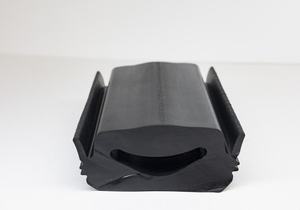
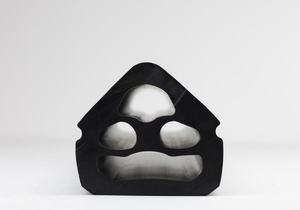
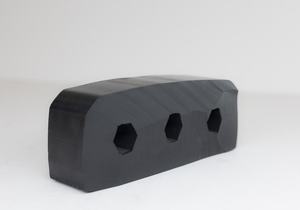
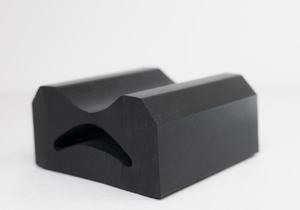
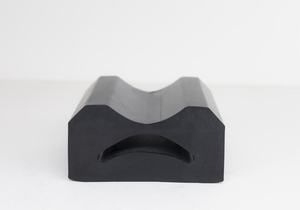
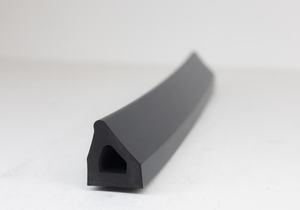
Marine and hatch cover seals are critical components used in maritime and shipbuilding industries to provide watertight and weatherproof seals between different sections of vessels, including hatch covers, doors, windows, and bulkheads. These seals play a crucial role in preventing the ingress of water, moisture, and environmental contaminants into ship compartments, cargo holds, and other enclosed spaces. They help maintain the structural integrity, buoyancy, and safety of vessels while ensuring cargo protection, crew safety, and environmental compliance. Here’s a comprehensive overview of marine and hatch cover seals:
- Types of Marine and Hatch Cover Seals:
- Rubber Seals: Rubber seals, including elastomers such as EPDM (Ethylene Propylene Diene Monomer), neoprene, and silicone, are commonly used in marine applications for their flexibility, resilience, and weather resistance. They are used to create a watertight seal between hatch covers, doors, and other access points on ships and vessels.
- Compression Seals: Compression seals consist of a compressible elastomeric core encased in a metal or rubber jacket. They are used to seal the gaps between hatch covers and coamings, ensuring a tight seal against water ingress. Compression seals are designed to withstand the dynamic movements and loads experienced by ships during navigation.
- Rubber Fenders: Rubber fenders are used to protect vessels from impact damage during berthing and mooring operations. They are installed along the hull or at docking facilities to absorb kinetic energy and prevent damage to the ship’s structure. Rubber fenders may also serve as secondary seals to prevent water intrusion between the vessel and the dock.
- Wiper Seals: Wiper seals, also known as scraper seals or wiper rings, are used to remove water, debris, and contaminants from moving surfaces, such as hydraulic cylinders, piston rods, and hatch cover tracks. They help maintain a clean and dry environment, reducing the risk of corrosion, fouling, and mechanical wear.
- Bulb Seals: Bulb seals feature a bulb-shaped profile that provides a secure and resilient seal when compressed against mating surfaces. They are commonly used in hatch cover applications to provide effective weatherproofing and insulation.
- Flexible PVC Seals: Flexible PVC seals are used in marine applications to provide a watertight seal between hatch covers and coamings. They offer excellent resistance to UV radiation, saltwater, and environmental contaminants, making them suitable for marine environments.
- Materials and Construction:
- Rubber: Rubber seals are the most common material used in marine and hatch cover seals due to their excellent sealing properties, flexibility, and durability. EPDM rubber is preferred for its resistance to weathering, ozone, and UV radiation, making it suitable for marine applications.
- Metal: Metal components such as aluminum, stainless steel, and galvanized steel are used in the construction of hatch covers, coamings, and sealing mechanisms. Metal seals provide structural support, stability, and corrosion resistance, ensuring the longevity and reliability of the seal assembly.
- Plastic: Plastic components such as PVC (Polyvinyl Chloride) are used in marine seals for their corrosion resistance, low friction, and ease of installation. PVC seals are often used as secondary seals or protective covers to enhance the performance and longevity of rubber seals.
- Fabric: Fabric-reinforced rubber seals are used in heavy-duty marine applications to provide additional strength, tear resistance, and dimensional stability. Fabric layers are embedded within the rubber matrix to enhance the seal’s performance under high loads and dynamic movements.
- Operating Conditions:
- Saltwater Exposure: Marine and hatch cover seals must be capable of withstanding exposure to saltwater, which can cause corrosion, degradation, and deterioration of materials. Specialized seals with corrosion-resistant coatings or materials are used to ensure long-term performance in marine environments.
- Temperature Fluctuations: Marine and hatch cover seals must be able to withstand temperature fluctuations, from freezing conditions in polar regions to high temperatures in tropical climates. Seals should maintain their flexibility, resilience, and sealing properties over a wide temperature range.
- Dynamic Movements: Marine vessels are subjected to dynamic movements such as rolling, pitching, and heaving during navigation. Seals must be designed to accommodate these movements without compromising the integrity of the seal or causing leakage.
- UV Radiation: Seals exposed to sunlight on deck areas are susceptible to UV radiation, which can cause degradation and deterioration of rubber materials. UV-resistant seals with additives such as carbon black or UV stabilizers are used to mitigate the effects of UV exposure.
- Installation and Maintenance:
- Proper installation of marine and hatch cover seals is essential to ensure their effectiveness and longevity. Seals should be installed according to manufacturer specifications, including proper alignment, compression, and fastening.
- Regular inspection and maintenance of seals are necessary to identify signs of wear, damage, or deterioration and prevent unexpected failure. Seals should be inspected for cracks, tears, swelling, or deformation, and replaced as needed.
- Seals should be cleaned regularly to remove dirt, debris, and salt deposits that can compromise their performance. Lubrication of seals may be necessary to maintain flexibility, prevent sticking, and reduce friction between mating surfaces.
In summary, marine and hatch cover gaskets are essential components used to provide watertight and weatherproof seals on ships, vessels, and maritime structures. With their durable construction, reliable sealing properties, and resistance to environmental factors, marine seals ensure the integrity, safety, and efficiency of maritime operations while protecting cargo, crew, and the marine environment. Proper selection, installation, and maintenance of marine and hatch cover seals are essential to ensure their continued performance and longevity in demanding marine environments.
